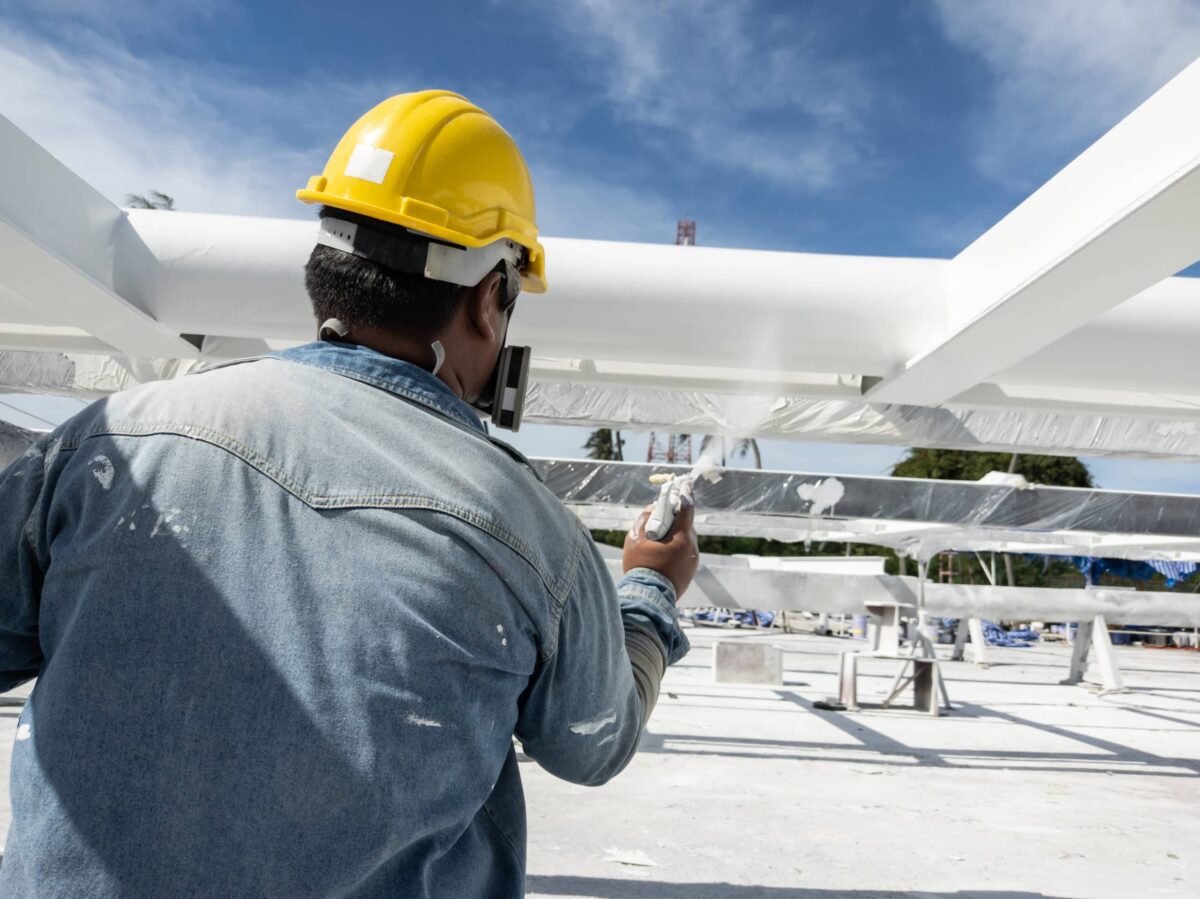How Fire Resistant Coatings Improve Safety

Fire safety is a crucial consideration in any building, whether residential, commercial, or industrial. One of the most effective ways to enhance fire safety is by using fire-resistant coatings. These coatings provide a protective barrier that can help slow down the spread of flames, giving occupants more time to evacuate and minimizing damage to the structure. This article will explore how fire-resistant coatings work, their benefits, and why they are essential for improving safety. Spray Tex Insulation, located in Bonham, TX, specializes in applying fire-resistant coatings to ensure your property is better protected against fire hazards.
Understanding Fire-Resistant Coatings
What Are Fire-Resistant Coatings?
Fire-resistant coatings, also known as intumescent or fire-retardant coatings, are specially formulated paints and coatings that protect materials from fire damage. These coatings are designed to expand when exposed to high temperatures, forming a thick, insulating layer that slows down heat transfer and helps prevent the material underneath from igniting.
Fire-resistant coatings can be applied to various surfaces, including wood, steel, and concrete, making them versatile and suitable for different building types. They are an integral part of a comprehensive fire protection strategy, complementing other safety measures like fire alarms, sprinklers, and fire-resistant building materials.
How Do Fire-Resistant Coatings Work?
The primary function of fire-resistant coatings is to delay the spread of fire by providing a barrier between the fire and the material beneath it. When exposed to high temperatures, these coatings undergo a chemical reaction that causes them to swell and form a char-like layer. This layer insulates the material, reducing heat penetration and preventing the fire from spreading as quickly.
There are two main types of fire-resistant coatings:
- Intumescent Coatings: These coatings expand when exposed to heat, creating a thick, protective layer that insulates the material and slows down the combustion process. Intumescent coatings are commonly used on structural steel, which is critical for maintaining the integrity of a building during a fire.
- Fire-Retardant Coatings: These coatings work by releasing flame-retardant chemicals when exposed to heat, which helps to slow down or extinguish the flames. Fire-retardant coatings are often used on wood and other combustible materials to reduce their flammability.
Benefits of Fire-Resistant Coatings
Enhanced Safety
The most significant benefit of fire-resistant coatings is the enhanced safety they provide. By slowing down the spread of fire, these coatings give occupants more time to evacuate the building safely. In commercial and industrial settings, where large numbers of people may be present, this extra time can be critical in preventing injuries or fatalities.
Structural Protection
Fire-resistant coatings help protect the structural integrity of a building during a fire. Materials like steel can lose their strength when exposed to high temperatures, leading to potential structural collapse. Intumescent coatings protect these materials by insulating them from the heat, reducing the risk of collapse and allowing the building to withstand the fire for longer periods.
Reduced Property Damage
By slowing down the spread of fire and protecting the underlying materials, fire-resistant coatings can help reduce the overall damage to a property. This can result in lower repair costs and a faster recovery after a fire incident. In addition, fire-resistant coatings can also protect valuable assets, equipment, and inventory from fire damage.
Compliance with Building Codes
Many building codes and regulations require the use of fire-resistant materials and coatings in certain types of structures. Applying fire-resistant coatings can help ensure that your building meets these requirements, reducing the risk of fines or penalties for non-compliance.
Cost-Effective Fire Protection
Fire-resistant coatings offer a cost-effective way to enhance fire protection in your building. Compared to other fire protection measures, such as installing additional fire-resistant barriers or upgrading to more fire-resistant materials, coatings can provide significant protection at a lower cost. They are also relatively easy to apply and maintain, making them a practical choice for many property owners.
Where to Apply Fire-Resistant Coatings
Structural Steel
Structural steel is a common material used in commercial and industrial buildings, but it is vulnerable to high temperatures during a fire. Intumescent coatings are often applied to structural steel to help maintain its strength and integrity during a fire, preventing the building from collapsing.
Wood Surfaces
Wood is highly combustible, making it essential to protect wooden surfaces with fire-retardant coatings. These coatings can be applied to walls, ceilings, and other wooden elements in residential and commercial buildings to reduce the risk of fire spreading.
Concrete
While concrete is not as flammable as wood or steel, it can still be damaged by high temperatures. Fire-resistant coatings can help protect concrete surfaces from cracking and spalling during a fire, preserving the structural integrity of the building.
Industrial Equipment
In industrial settings, fire-resistant coatings can be applied to equipment and machinery to protect them from fire damage. This is particularly important in environments where flammable materials are present, and the risk of fire is higher.
Steps for Applying Fire-Resistant Coatings
1. Surface Preparation
Before applying fire-resistant coatings, it’s essential to prepare the surface properly. This includes cleaning the surface to remove dirt, grease, and other contaminants that could affect the coating’s adhesion. Any existing coatings or paint should also be removed to ensure a smooth and even application.
2. Priming
Depending on the material being coated, a primer may be required to improve the adhesion of the fire-resistant coating. The primer helps the coating bond to the surface and provides an additional layer of protection.
3. Application
Fire-resistant coatings can be applied using brushes, rollers, or spray equipment, depending on the size and complexity of the surface. It’s important to follow the manufacturer’s instructions for application, including the recommended thickness of the coating. Applying the coating too thinly may reduce its effectiveness, while applying it too thickly can lead to issues with drying and adhesion.
4. Drying and Curing
After application, the coating needs time to dry and cure properly. This process can take several hours to several days, depending on the type of coating and environmental conditions. It’s important to ensure that the coating is fully cured before exposing it to high temperatures or other stresses.
5. Inspection and Maintenance
Once the fire-resistant coating has been applied and cured, regular inspections should be conducted to check for any signs of damage or wear. Over time, the coating may need to be reapplied or touched up to maintain its effectiveness.
Frequently Asked Questions (FAQs)
How long do fire-resistant coatings last?
The lifespan of a fire-resistant coating depends on factors such as the type of coating, the environment it is exposed to, and the level of maintenance it receives. Generally, fire-resistant coatings can last anywhere from 5 to 20 years, but regular inspections and maintenance are essential to ensure they continue to provide adequate protection.
Can fire-resistant coatings be applied to existing buildings?
Yes, fire-resistant coatings can be applied to both new and existing buildings. In existing structures, the coatings can be applied as part of a fire protection upgrade to improve safety and comply with building codes.
Are fire-resistant coatings safe for indoor use?
Most fire-resistant coatings are safe for indoor use, but it’s important to choose a product that is specifically designed for indoor applications. Some coatings may emit fumes during application and curing, so proper ventilation is essential.
Do fire-resistant coatings require professional application?
While some fire-resistant coatings can be applied by DIY enthusiasts, professional application is recommended for larger or more complex projects. A professional contractor will ensure that the coating is applied correctly and meets all relevant safety standards.
Conclusion
Fire-resistant coatings are a vital component of any fire protection strategy. They enhance safety by slowing down the spread of fire, protecting the structural integrity of the building, and reducing property damage. Whether you are constructing a new building or upgrading an existing one, applying fire-resistant coatings can provide peace of mind and help ensure compliance with building codes. For expert fire-resistant coating application, contact Spray Tex Insulation at (903) 505-6326. We proudly serve Bonham, TX, and surrounding areas, including Caddo Mills, Commerce, Sherman, Trenton, Van Alstyne, and Whitesboro.









